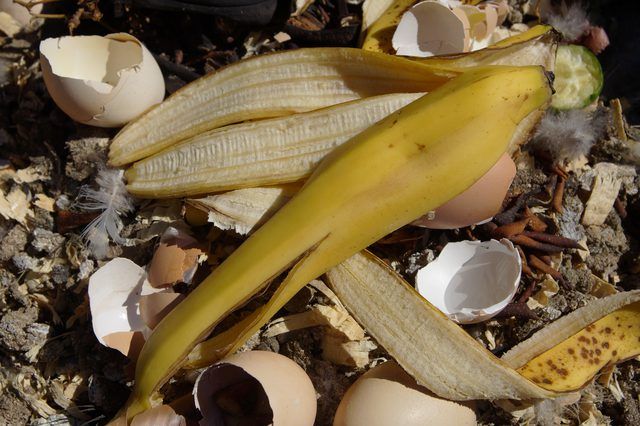Bulbs
Flower Basics
Flower Beds & Specialty Gardens
Flower Garden
Garden Furniture
Garden Gnomes
Garden Seeds
Garden Sheds
Garden Statues
Garden Tools & Supplies
Gardening Basics
Green & Organic
Groundcovers & Vines
Growing Annuals
Growing Basil
Growing Beans
Growing Berries
Growing Blueberries
Growing Cactus
Growing Corn
Growing Cotton
Growing Edibles
Growing Flowers
Growing Garlic
Growing Grapes
Growing Grass
Growing Herbs
Growing Jasmine
Growing Mint
Growing Mushrooms
Orchids
Growing Peanuts
Growing Perennials
Growing Plants
Growing Rosemary
Growing Roses
Growing Strawberries
Growing Sunflowers
Growing Thyme
Growing Tomatoes
Growing Tulips
Growing Vegetables
Herb Basics
Herb Garden
Indoor Growing
Landscaping Basics
Landscaping Patios
Landscaping Plants
Landscaping Shrubs
Landscaping Trees
Landscaping Walks & Pathways
Lawn Basics
Lawn Maintenance
Lawn Mowers
Lawn Ornaments
Lawn Planting
Lawn Tools
Outdoor Growing
Overall Landscape Planning
Pests, Weeds & Problems
Plant Basics
Rock Garden
Rose Garden
Shrubs
Soil
Specialty Gardens
Trees
Vegetable Garden
Yard Maintenance
How to Feed Roses With Banana Peels
How to Feed Roses With Banana Peels. Bananas continue their usefulness even after you've eaten the fruit. The inedible peels provide potassium and magnesium to nutrient-hungry plants, including rose bushes (Rosa spp), which thrive in U.S. Department of Agriculture plant hardiness zones 3 to 11. Some gardeners also swear by banana peels' ability to...
Bananas continue their usefulness even after you've eaten the fruit. The inedible peels provide potassium and magnesium to nutrient-hungry plants, including rose bushes (Rosa spp), which thrive in U.S. Department of Agriculture plant hardiness zones 3 to 11. Some gardeners also swear by banana peels' ability to deter aphids -- the bane of rose growers everywhere. If you're a banana lover, you have a few options for using the castoff peels to nourish and protect roses.
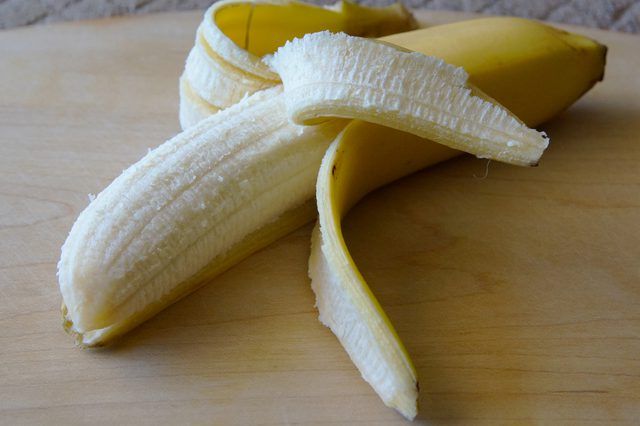
Whole peels deteriorate more slowly than strips or chunks, robbing your roses of the more immediate benefits of the decomposing plant material. Once you've peeled your banana, chop the peels into strips or chunks. This is also a good time to get rid of the blackened whole bananas you never got around to -- just chop the whole fruit, flesh and all, and mix it with the processed peels. If you don't eat bananas frequently, save the chopped pieces in the freezer, either in a jar or a tightly sealed bag.
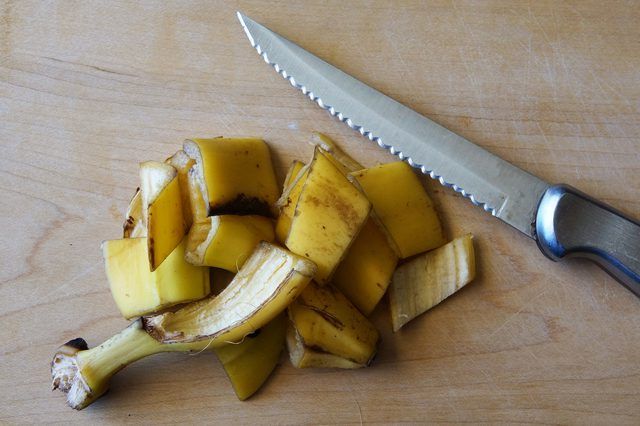
To feed individual rose bushes, gently remove about 1 inch of soil in a circular trench around the bush's base. After scattering the chopped peels in this circular trench, backfill it with soil and replace mulch, if necessary. If you have a rose hedge, work your way along the row over the course of the growing season. Dig a short shallow trench in front of a new section of the rose hedge each day, backfilling with soil and mulch as you go. When rotting fruit makes up a portion of the daily dose, digging the trench more deeply will deter foraging pests, as will mixing in wood ashes to neutralize the scent.
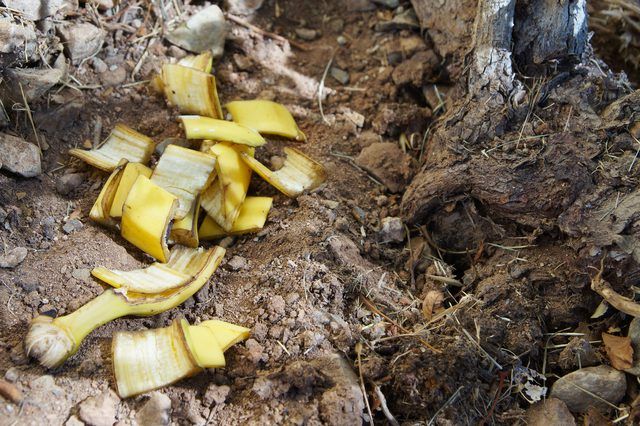
If you have the room to spread out peels to dry them, you can make a material that mulches and nourishes your rose bushes at the same time. Spreading the peels flat on screens in a dark, dry room is the least labor-intensive method -- especially if you are consuming bananas during the roses' long dormant season -- but you can also dry the peels in a dehydrator or in a low oven. Once you've accumulated several pounds of dried peels, grind them in a food processor. Scatter this mulch around the rose bushes in the spring.
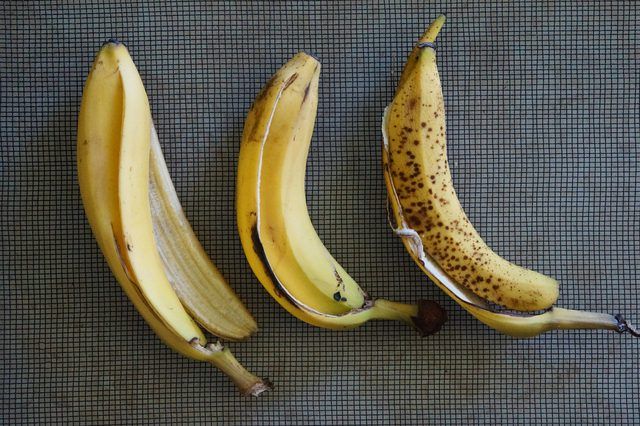
Mixing chopped banana peels into the compost pile is another option for feeding rose bushes. This method is especially helpful if you either don't wish to bury the bananas around the rose bushes every few days or don't eat enough of the fruit to make feeding individual roses worth the while. Instead, mix the peels in with your other fruit and vegetable peelings, and toss them on the compost pile, where the peels will add their nutrients as they break down. It's best to either bury the fresh food scraps a few feet into the compost pile or mix them with wood ashes before tossing them on the pile.
